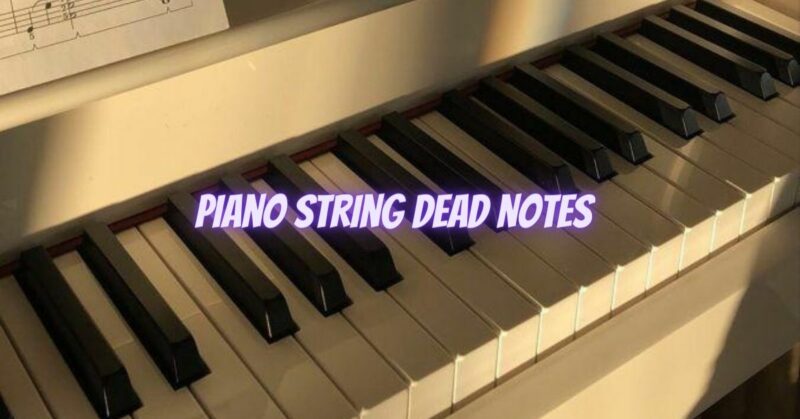Pianos are complex musical instruments with an intricate system of strings, hammers, and dampers working together to produce beautiful sound. However, sometimes pianists encounter dead notes – keys that fail to produce sound or produce a very faint and lifeless sound. This issue can be frustrating for pianists, but understanding the possible causes and implementing the right solutions can help restore the full sound and playing experience of the piano.
Causes of Piano String Dead Notes:
1. Worn or Damaged Strings: Prolonged use, changes in humidity, and other factors can lead to worn or damaged strings. Over time, these strings lose their ability to vibrate properly, resulting in dead notes.
2. Foreign Object Interference: Dust, dirt, or other small objects can find their way between the strings and interfere with their vibrations, causing dead notes.
3. String Slippage: Piano strings can slip from their proper position, causing a loss of tension and resulting in dead notes.
4. Damaged or Worn Hammer Felts: The hammer felts, responsible for striking the strings, can become damaged or worn out, reducing their effectiveness in producing sound.
5. Inadequate Damper Regulation: The dampers, which stop the string vibrations when keys are released, may not function correctly, leading to dampened sound and dead notes.
6. Action Wear or Misalignment: Regular use can cause wear or misalignment in the piano’s action, affecting its ability to strike the strings properly.
Solutions for Piano String Dead Notes:
1. Regular Maintenance: Scheduling regular maintenance, including tuning and regulation, can prevent many dead note issues. Professional piano technicians can identify and address potential problems before they worsen.
2. Cleaning: Inspecting the affected keys and cleaning the area between the strings can help remove foreign objects and restore proper string vibrations.
3. String Replacement: If a dead note is caused by a damaged or worn-out string, replacing it with a new one of the appropriate gauge and material is necessary.
4. String Repositioning: A piano technician can reposition any slipped strings, ensuring they are correctly aligned and under the proper tension.
5. Damper Regulation: Proper regulation of the dampers is essential to ensure they release the strings at the right moment.
6. Action Regulation: Realigning or regulating the piano action can resolve dead note issues caused by wear or misalignment.
7. Hammer Voicing: Replacing damaged or worn hammer felts and voicing the hammers can restore their ability to strike the strings effectively.
Conclusion:
Encountering dead notes on a piano can be disheartening, but with proper understanding and maintenance, this issue can be resolved. Regular maintenance by a skilled piano technician is crucial to prevent and address potential problems that can lead to dead notes. Additionally, a well-maintained and properly functioning piano not only enhances the playing experience for pianists but also preserves the instrument’s longevity and sound quality. Remember, addressing dead notes promptly will help ensure that your piano continues to be an instrument of musical joy and inspiration.


